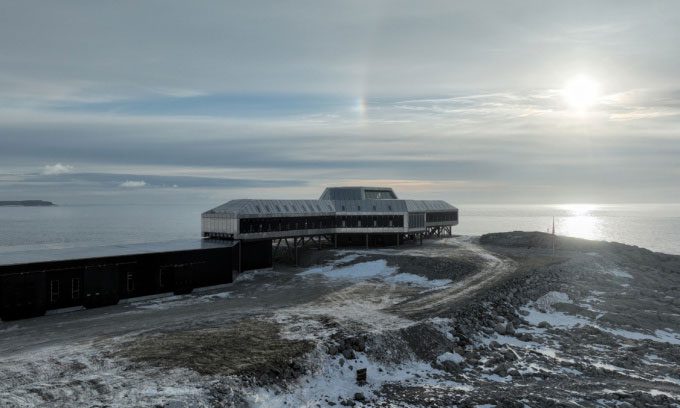On February 7, the Qinling research station of China in Antarctica officially commenced operations.
The Qinling Station is China’s third research facility in Antarctica that can operate year-round, accommodating up to 80 people in summer and 30 in winter. The station is built on Inexpressible Island, a rocky island with strong winds, located near the Ross Sea. Due to the unique environmental conditions here, the station employs an integrated spatial system and special green technology.

Qinling, the fifth scientific research station of China in Antarctica, captured by drone on February 6, 2024. (Photo: China Daily).
With an area of 5,244 m2, the new facility is designed in the shape of the Southern Cross constellation to honor Zheng He, the Chinese explorer and mariner who navigated using this constellation on voyages to the Western Sea.
The station includes three main areas with a common room in the center serving dining and working purposes, connecting to the summer living area and laboratories at either end. The winter “dormitory” is located on the second floor of the center.
The interior design of the Qinling Station is highly integrated and manufactured in modular form in China for easy transport and assembly on-site. The main building’s long axis is aligned with the prevailing wind direction. A portion of the ground floor is elevated to prevent snow accumulation in Antarctica. “This way, we minimize the area needed to build the station while maximizing the reduction of impact on the local landscape,” architect Zhu He stated.
Building a scientific station in Antarctica is akin to constructing in uninhabited land. Thus, each research station is equipped with self-sufficient infrastructure. “The station can support basic daily needs such as water supply and waste treatment,” Zhu noted.
A helipad is being constructed about 1 km from Qinling. Helicopters are essential for transporting personnel and goods to the station. This area is also being used as the power plant for the station. Two new energy sources, solar and wind power, are being tested there. Upon completion, 60% of the energy for the new station will come from these two sources.


















































